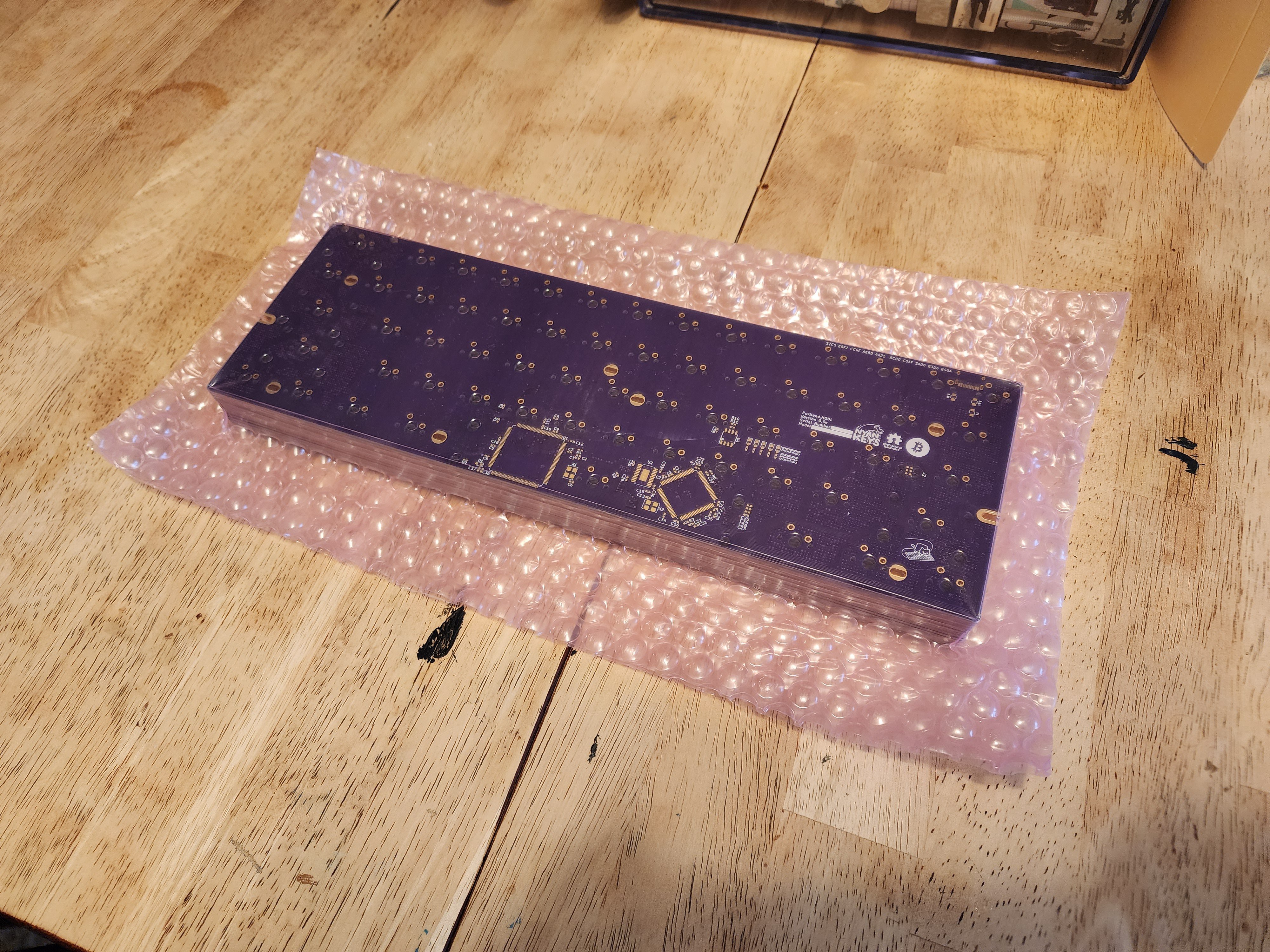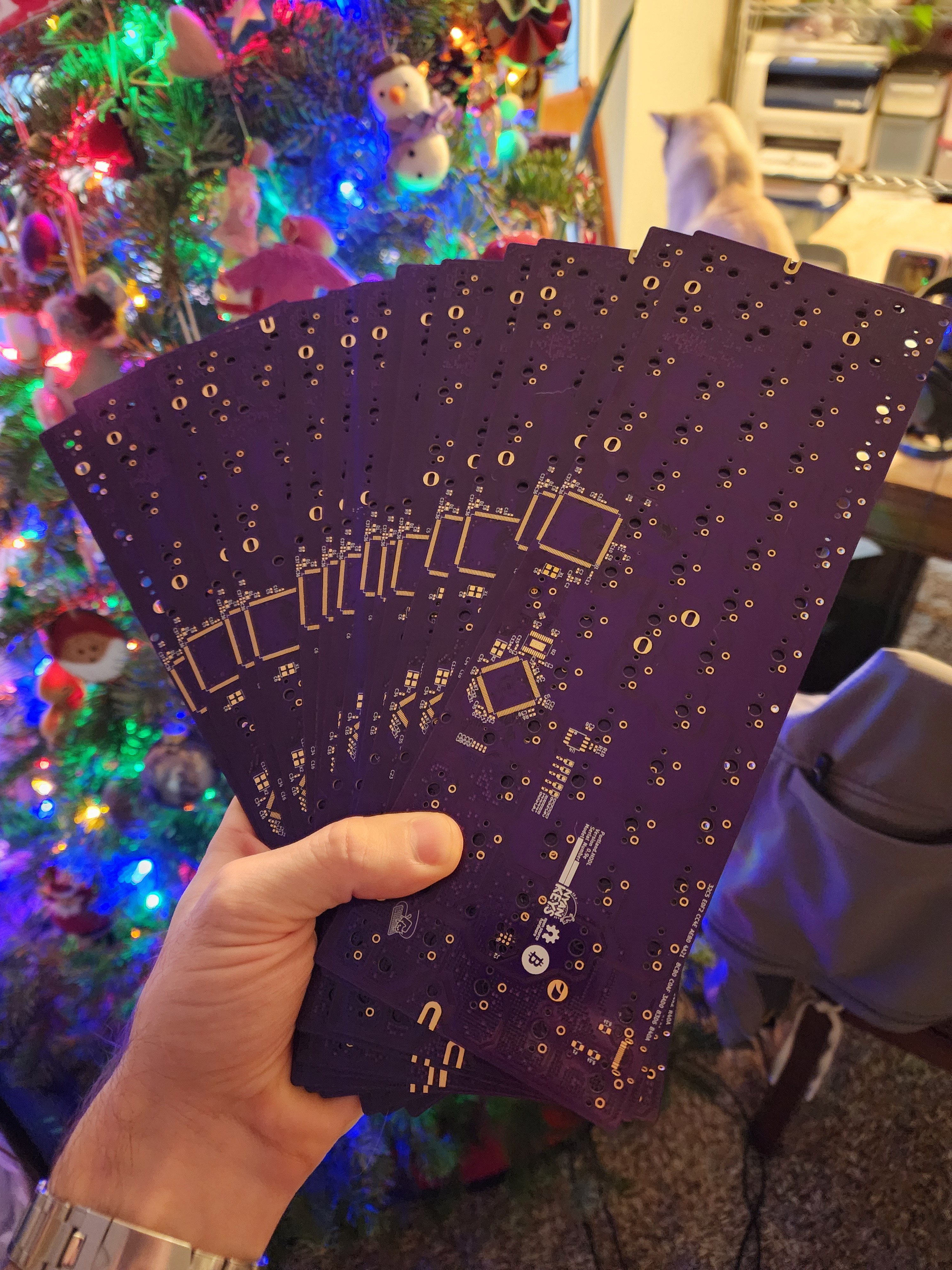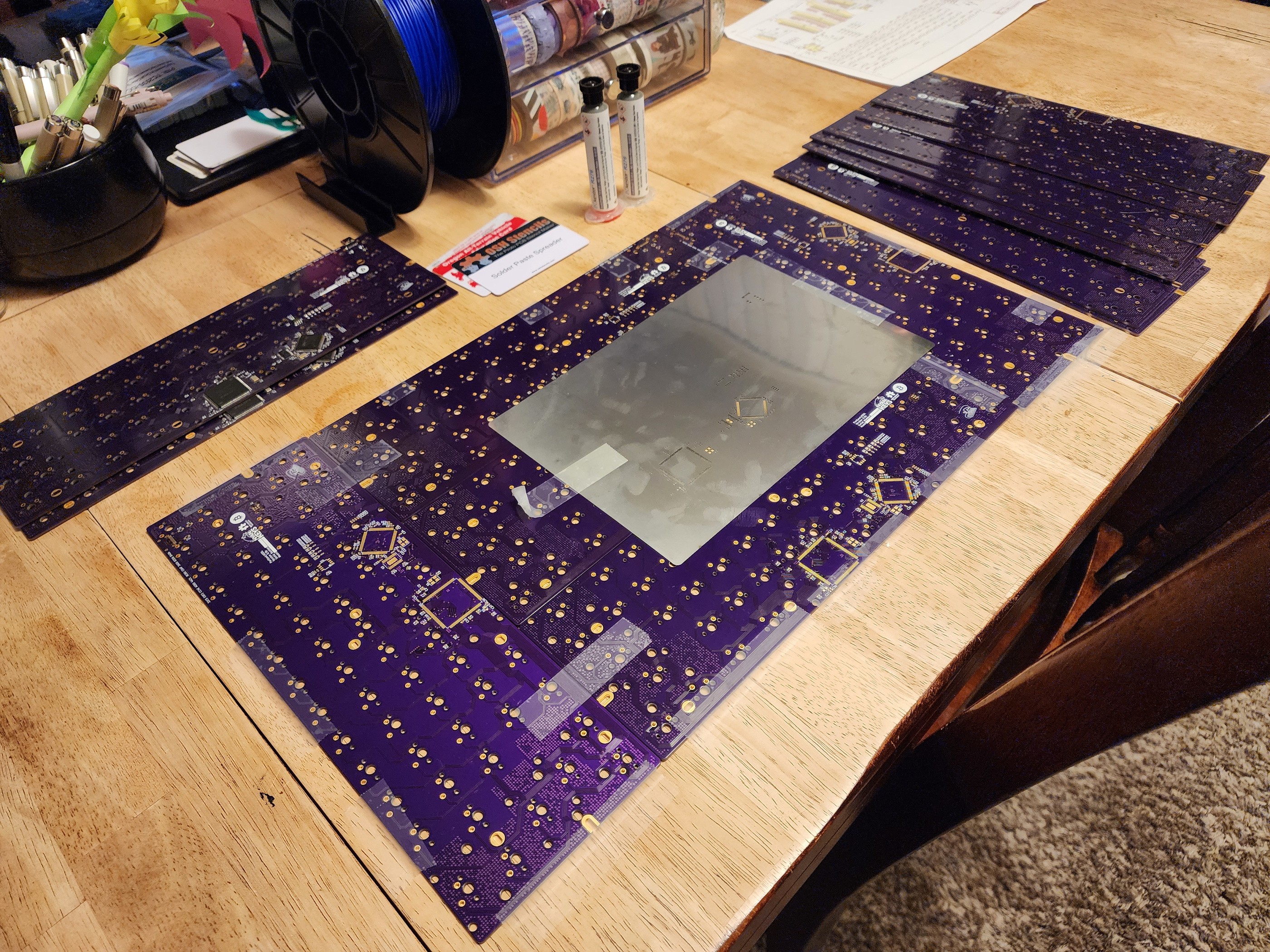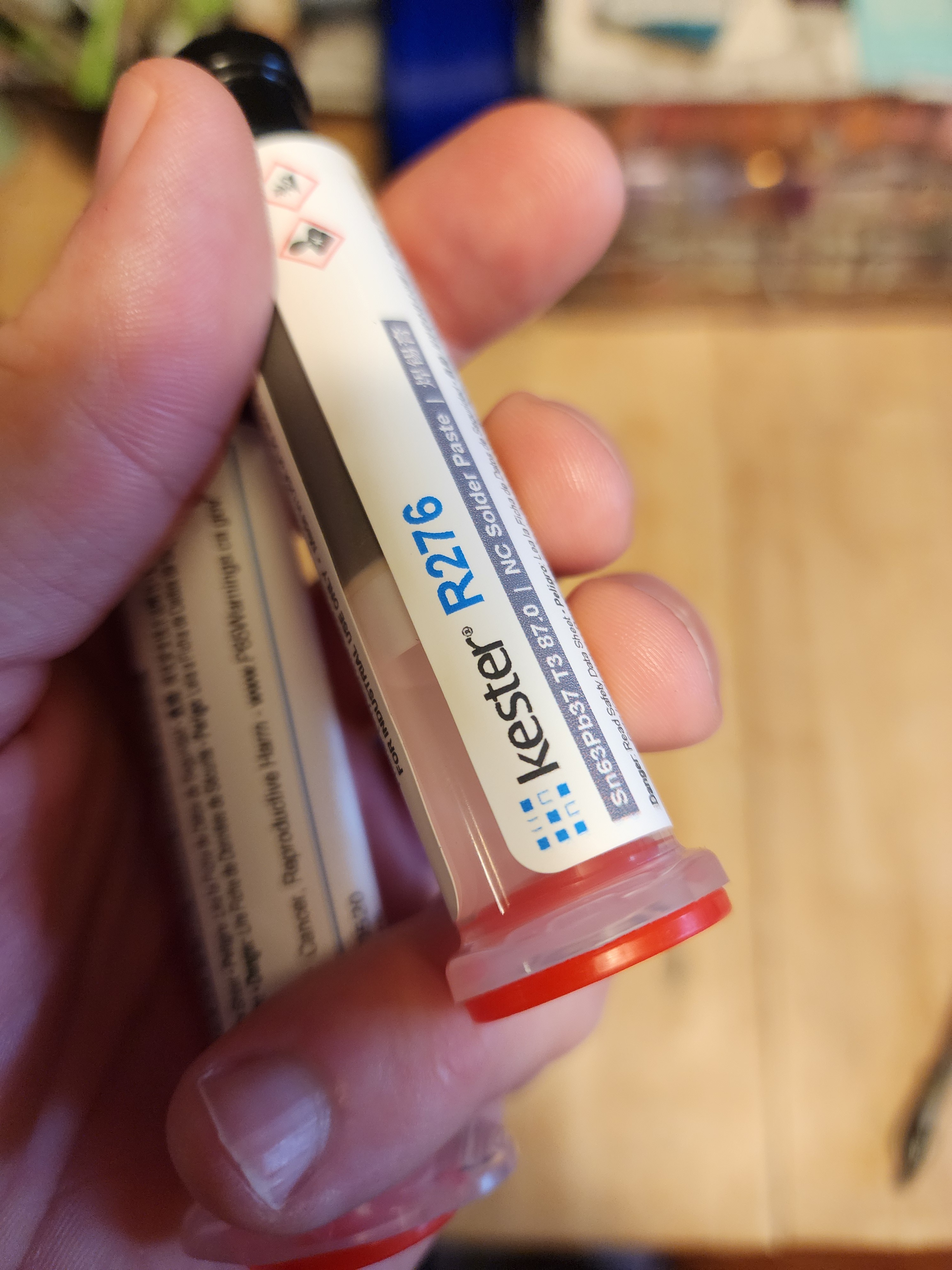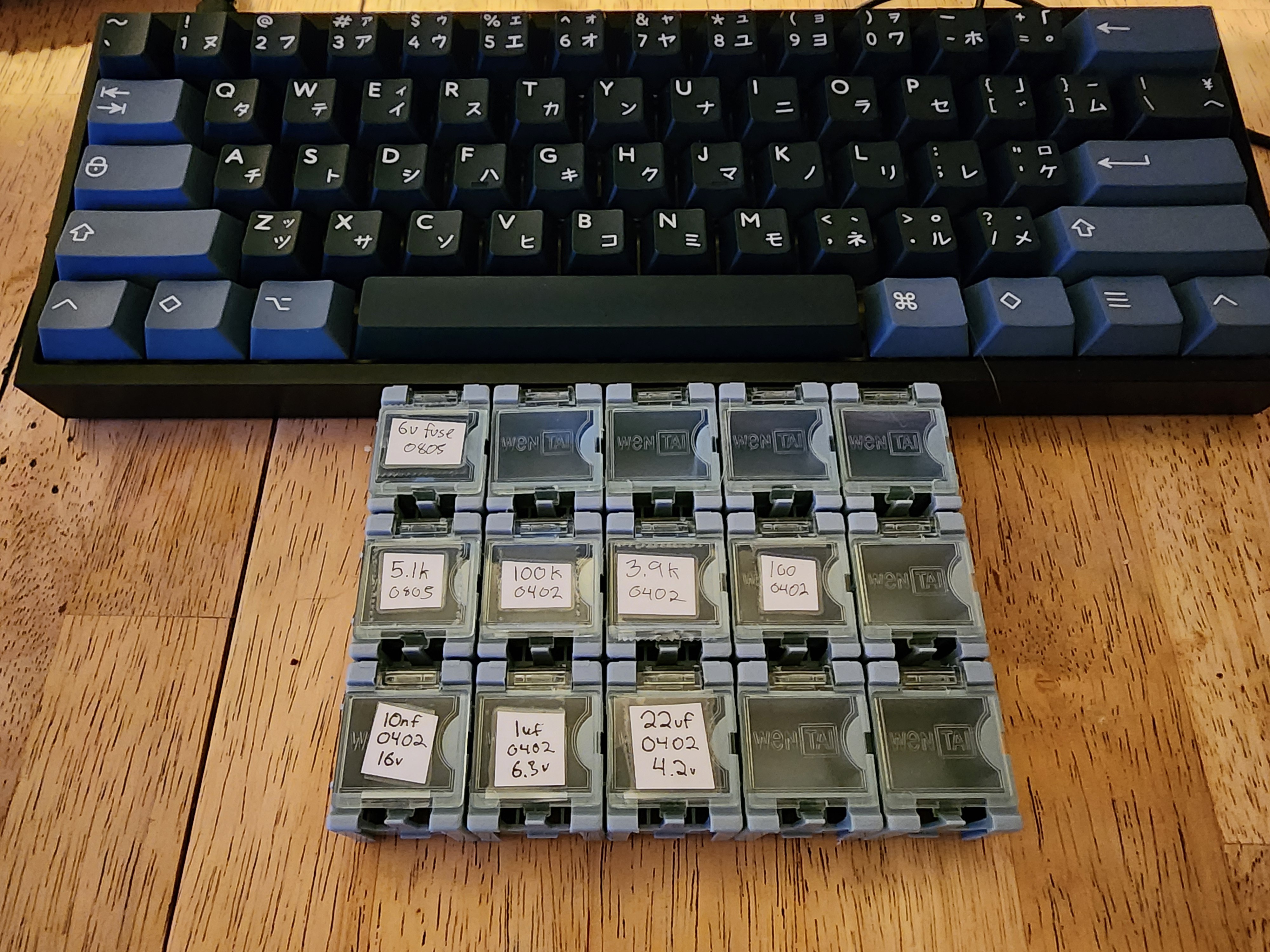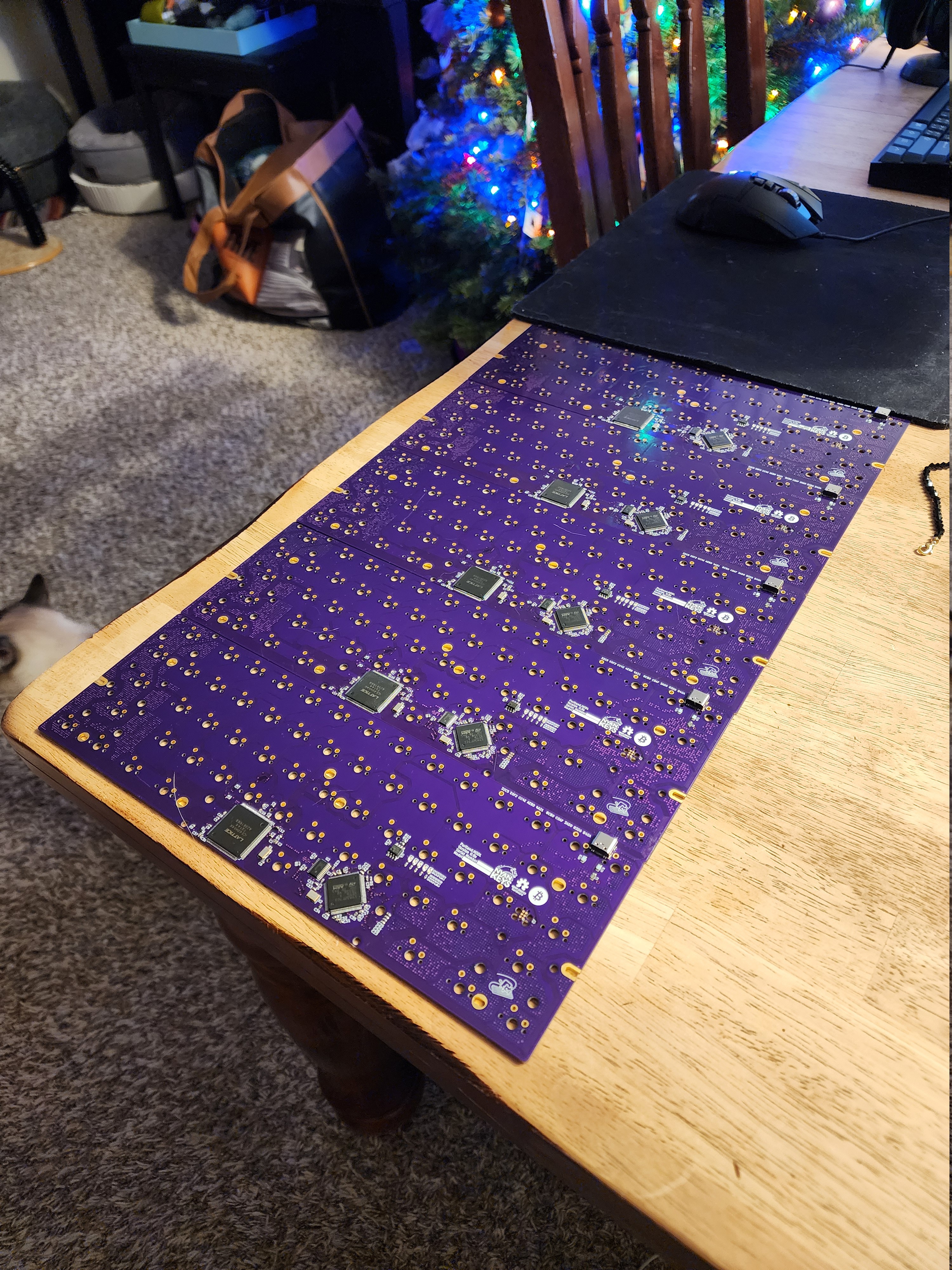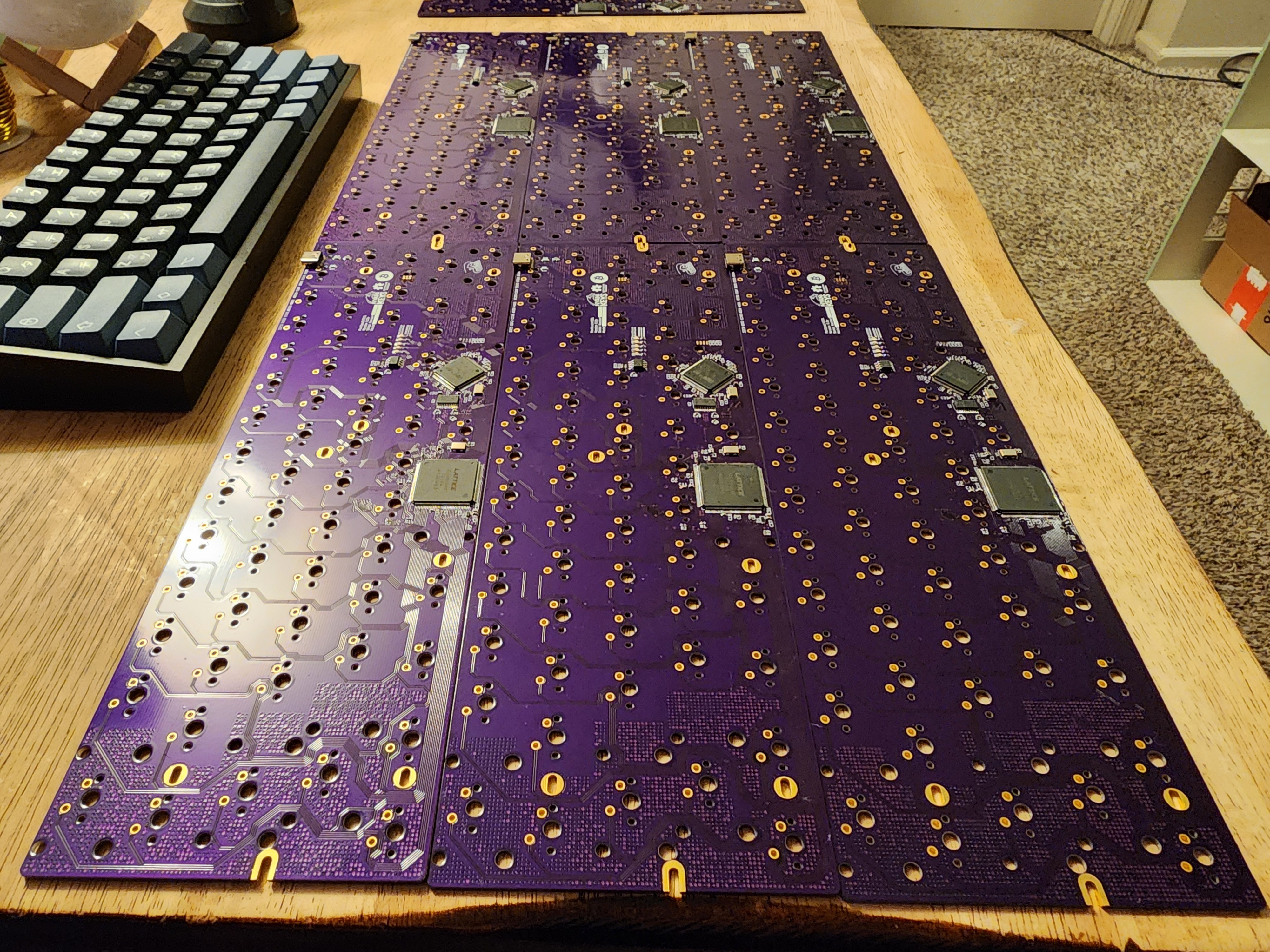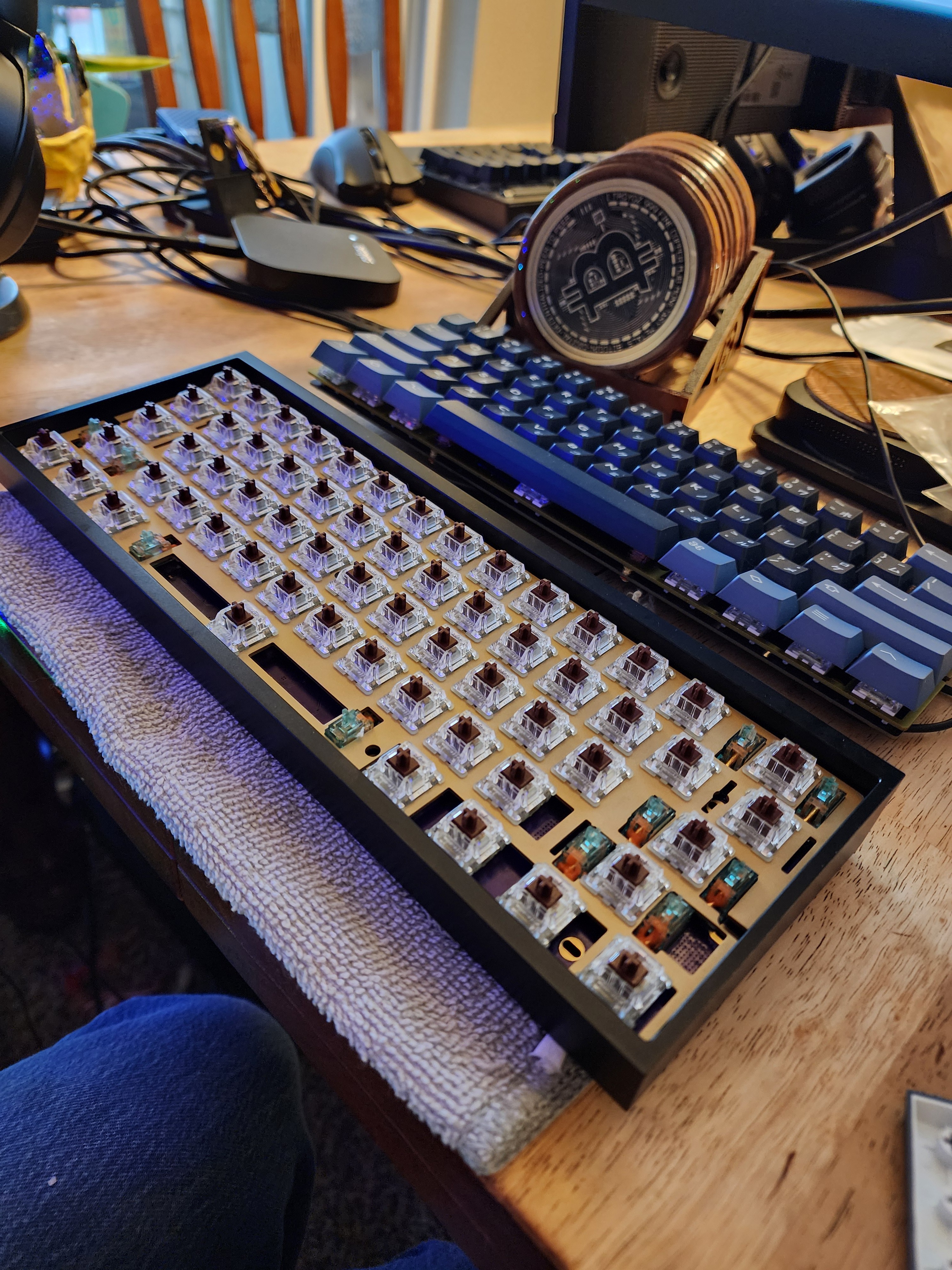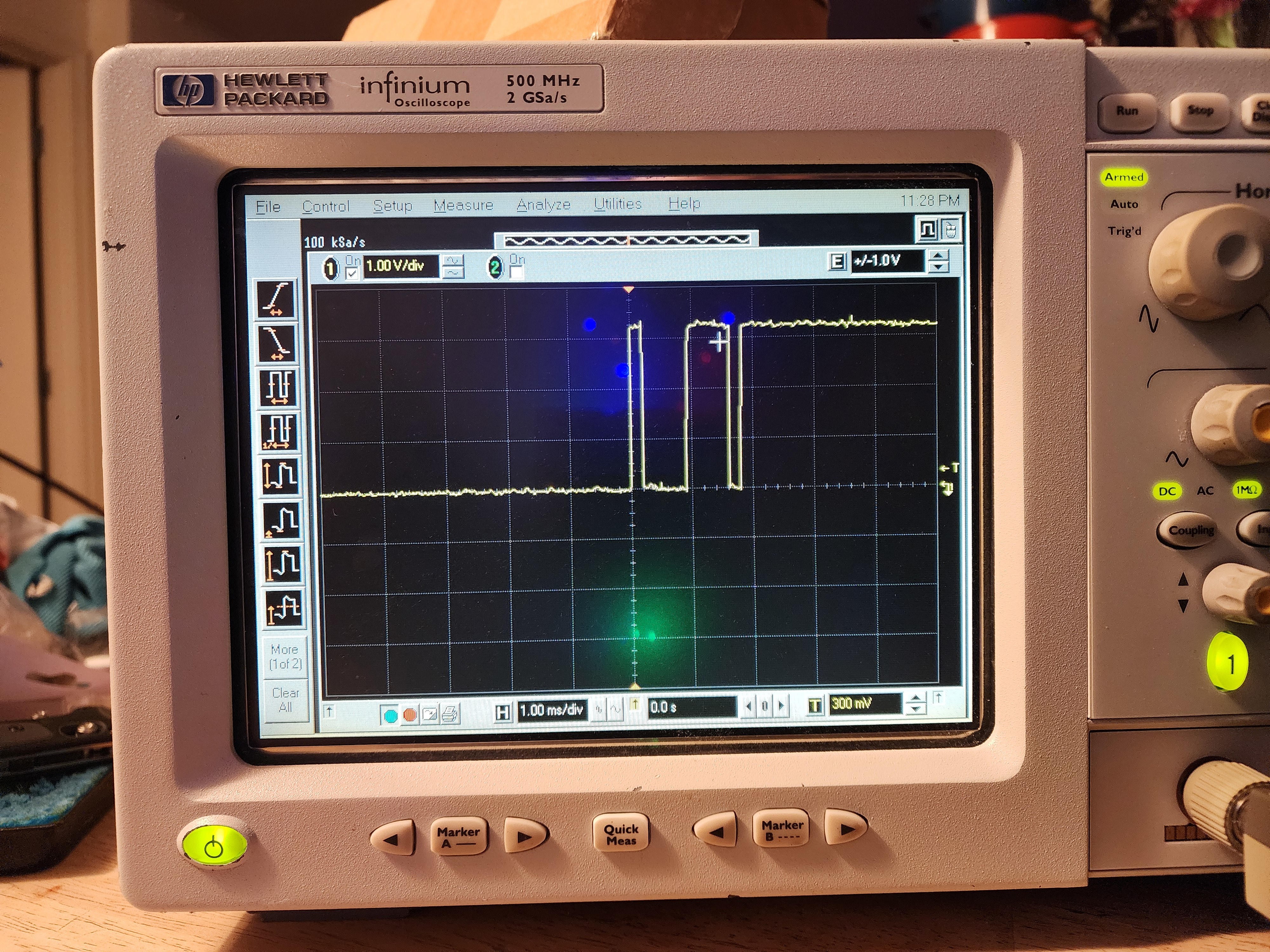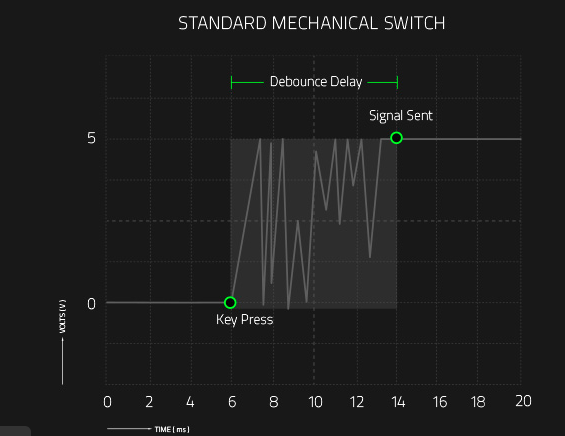-
Building is for Builders
01/11/2024 at 03:07 • 0 commentsIntro
So why the radio silence? Well I have been building an getting a small supply chain in order! So after the initial Hackaday post with the hackester.io several people had reached out about how to obtain a ready made version of Nyan Keys! I could not be more thankful that people had taken interest in project of mine when all former projects end up in boxes. With that said, the challenge of turning a single prototype into many began and the challenges were numerous.
Lets start off with step 1. First I went to OSH Park and requested 10 Nyan Keys .9e boards through their medium run service which totaled to $409. Spendy but to me worth the cost for a product/project I love so much and have no interest in corner cutting. For the first time ever I also decided to get a solder stencil to hopefully save time. This step turns out to be the most important step in board production. Out of all the things you can take away from this piece it would be to get stencils of you are attempting any kind of volume.
Also thanks OSH Park for sending 14 boards.
2 weeks later! Some glamor shots of the boards :D
Some glamor shots of the boards :D
The day is now Saturday, I decided today was the day to build as many boards as possible. A jig was made with 4 PCBs and some scotch tape

For anyone who is curious this was the paste I ended up using. I decided on going Pb because of the overall ease to work with combined with no long term risk of tin whiskers
 So next thing I use a plastic gift card as a spreader and ... well let the results speak for themselves....
So next thing I use a plastic gift card as a spreader and ... well let the results speak for themselves....
So the next optimization was to not be picking things from the reels so I used these tiny SMD boxes so I could pick the parts out quickly with tweezers.

So the next part is just using air and such to reflow these parts after I have placed them by hand onto the PCB.
And boom!

In conclusion get a solder stencil and good paste of you want to try to do any volume production. The time per board went from 8 hours to just over 1 in my case. I hope you all learned something and enjoyed the read. -
End to End Latency - ~300-500µs
12/10/2023 at 22:02 • 0 commentsSo one of the questions that keeps coming up is what is the end to end latency of this board. Well being up front I don't have the same level of tech that Rtings has. What I did decide to do was use my Saleae Logic Analyzer to capture the state of the stop capture key and the time until the capture stops once I press that key. The results still blow even the fastest keyboards out of the water at ~300-500us time between the logic level of the switch changing and the actual capture stop. These results include all delays including OS, USB Stack, and application.
Here is an example of the total time between pressing the stop key and the capture actually ending with just a 502us delay. This test is not perfect as there would be additional delays introduced by the application itself but at the end of the day the results are so much better than what is offered by anyone else. I won't worry about small details.
This test is not perfect as there would be additional delays introduced by the application itself but at the end of the day the results are so much better than what is offered by anyone else. I won't worry about small details.
Overall results like this should cement Nyan Keys as the lowest latency keyboard right now. -
Nyan Keys tries the new Cherry MX2A... And Cherry Loses
12/08/2023 at 07:02 • 0 commentsCherry MX2A The good, the bad, and thhhe uggggly.
Nayn Keys exposes the twilight zone of misleading marketing, and potentially discovering why debounce doesn't matter at the end of the day. If you missed it the title was supposed to show how failing to debounce works.
Lets start off with this snippet from Cherry's website."Precision Meets Longevity Through a meticulous 2-point welding process, our contacts are attached and integrated with robust resilience. This precision ensures a breathtakingly rapid debounce time of typically less than 1 ms and a lifespan exceeding 100 million clicks for select switch types."
Src. https://www.cherrymx.de/en/mx2a.html
That middle sentence "debounce time of typically less than 1 ms" had my mind captured. If I could combine these Cherry MX2A switches with Nyan Keys FPGA keyboard tech. There would certainly be no faster keyboard and lower latency board outhere. Cementing Nyan Keys at the top of the podium for a contest nobody asked to compete in.
Fast forward to today, a knock on my door and 95x Cherry MX2A Browns are sitting in a jar just waiting for me to solder up and enjoy their glorious "debounce time of typically less than 1 ms" unbinding Nyan Key from the Kaliths 5ms debounce time.
Some time later ... A fresh Cherry MX2A Nyan Keys is born.
I have a FPGA bitstream that creates a 1ms debounce timer length and write that to Nyan OS. Everything feels initially good! The switches are now allowed to change state just 1ms after an impulse (press or release) and there aren't any multiple presses.
After typing just 15 words I end up with my first "ooo" This was initially chalked up to just the way I was typing. After another few words a "vv" and then a "iii" appeared. These switches were certainly bouncing for more than 1ms. To add to the problem it wasn't a single switch it was multiple meaning this wasn't a one off outlier switch that just seemingly had a manufacturing defect. It was inherent to these switches.
Now I had to confirm my suspicions, I break out the ole' HP Infinium scope and start measuring and .... within 4 triggers.
A bounce period of nearly 2.0ms shows up. I repeat this again and again on various MX2A browns and they all are yes better at having a lower debounce time than Box Jades for example but the reality is the typically 1ms number is a far cry from the reality you will see with these switches. With all instances being lower than 3ms but bouncing longer than 1ms occoured far more often to warrant Cherry stating "typically" under 1ms.
At the end of the day I wouldn't recommend buying MX2A switches for their debounce properties because they will not live up to the marketing.Here is why it doesn't matter!
If you send the state of the key at the impulse, then arm the debounce timer that prevents the state from changing. The key state is still sent right away, the state just can't change until the debounce timer has counted to the target. These timers can be set to a very conservative value such as 5ms and have no effect because we as humans can't press and release a key in 5ms! So by the time you release the key, the debounce timer has already completed and the release is also sent instantly!
Here is an example from Razer's website showing how a debounce works in their keyboard with a standard mechanical switch! Notice they wait the debounce delay before sending the signal? They could instead just send the signal instantly if they used my method! This would reduce their products latency!src: https://www.razer.com/razer-optical-switch
TL;DR Cherry MX2A switches don't reliably perform under 1ms debouncing, but it won't matter anyways if you implement your debounce logic properly.
Also razer could improve their product latency quite a bit if they switch to sending the signal on impulse then just lock the state for the duration of the debounce.
Nyan Keys - FPGA Based Mechanical Keyboard
Using an FPGA to further reduce input latency, coupled with an overkill MCU, and a dash of USB 2.0 HS. Nothing beats the cats nyan.
 Portland.HODL
Portland.HODL